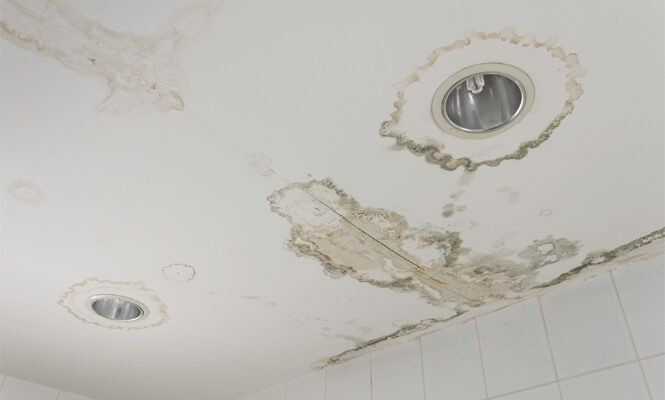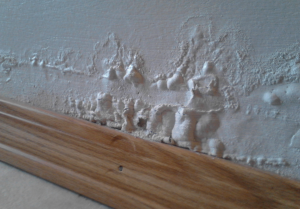The content following next about How to Remove Water Stains from Walls and Ceilings is relatively motivating. Don't miss out on it.

Water stains on wall surfaces are not pleasurable to the eyes. Sometimes it appears almost inescapable to experience water stains on wall surfaces in homes.
Homeowners living in moist regions continuously deal with the anxiety of water stains on walls. With all-around and also exact details on the reasons of water spots as well as punctual fixing processes, you will always be an action in advance of such incidents.
3 Typical Root Causes Of Water Stains on Walls
As opposed to popular belief, water discolorations on wall surfaces do not always originate from poor building products. There are numerous causes of water stains on walls. These consist of:
Moist
When hot moist air consults with completely dry cool air, it causes water droplets to form on the walls of buildings. When there is heavy steam from food preparation or showers, this takes place in bathrooms and also cooking areas. The water droplets can stain the bordering walls in these parts of your home and spread to various other locations.
Moist or condensation impacts the roofing as well as walls of buildings. This triggers them to appear darker than other locations of the residence. When the wall surface is wet, it produces an appropriate environment for the growth of microbes and also fungis. These might have negative impacts on health and wellness, such as allergies and also respiratory system conditions.
Poor Drain
This will stop water from permeating into the walls. This web links to excessive moisture that you notice on the walls of your structure.
The leading reason of wet wall surfaces, in this instance, can be a bad water drainage system. It can likewise be due to bad monitoring of sewage pipelines that run through the structure.
Pipe Leaks
A lot of residences have a network of water pipes within the walls. It always boosts the feasibility of such pipelines, as there is little oxygen within the wall surfaces.
Yet, a disadvantage to this is that water leakage influences the walls of the structure and triggers extensive damage. An indication of malfunctioning pipelines is the appearance of a water discolor on the wall surface.
Pro Tip
A houseplant in your home likewise raises its humidity. If the residence is currently moist, you might desire to present houseplants with minimal transpiration. An instance of suitable houseplants is succulents.
Water Stains on Wall: Repair Work Tips
When dealing with water spots, property owners would typically want a quick repair. Yet, they would certainly quickly recognize this is detrimental as the water spots recur. So, right here are a few valuable tips that will guide you in the repair of water spots on walls:
Verdict
Although no person wishes to have water stains on walls in their residence, it can take place to the very best of us. This write-up offers you take advantage of, as you now know just how to manage this accident if it does occur.
It is constantly best to recruit professional solutions to aid take care of the problems in your house.
In some cases it appears nearly unavoidable to experience water discolorations on walls in residences.
Contrary to prominent belief, water discolorations on wall surfaces do not always stem from poor structure materials. There are several reasons of water stains on wall surfaces. The water droplets can tarnish the surrounding wall surfaces in these parts of your residence as well as spread to various other locations.
Here are a couple of helpful ideas that will assist you in the repair of water spots on wall surfaces:
CHECKING FOR WATER DAMAGE
Water damage can be costly, and it may begin before you even notice the first signs of trouble. Water damage can cause mold and mildew in your walls and floors, which can create an abundance of health concerns for your family. It can also lead to costly repairs of various appliances and general home fixtures. To avoid the pricey consequences of water damage, here are Warner Service’s top 5 places you should check:
The walls – The easiest place to spot the beginnings of water damage is on the walls and ceilings of your home. If water damage is present, there will most likely be water stains, especially around the windows and doorframes, and/or cracks in the drywall. If a stain looks unusual (discolored to brown, black or gray, raised texture), has a swollen appearance or is soft to the touch, contact a professional immediately. The pipes – To avoid water damage, consistently check the pipes in your kitchen (especially the dishwasher and ice maker), bathrooms, laundry room (specifically washing machines) and basement for corrosion, leaks and water stains. Pay special attention to where the pipes connect in your home and the location of caulking around the bathroom fixtures, including toilets, sinks, showers and tubs. Missing or loose caulking and grout could be signs of leaking water. This seepage can also quickly cause mold and rust, so double check your water heater and tank for wet spots on the floor. The floor – Water damage is very easy to spot on the floor. Look for any warping or buckling of the material, especially in the basement. If your home has wood flooring, look for bright white or dark stains. If your home has carpeting, keep it dry and clean. A damp carpet that smells of mold could cause water damage and health problems. To avoid this, consider installing floor pans under your appliances to help prevent damages from small, slow and undetected leaks. The basement and attic – If your basement or attic smells odd check for mold and mildew around the area, especially the valley where the roof meets. While you are inspecting those areas, check for wall cracks, floor stains, rust and dampness in the insulation. If you live in a colder and/or rainier climate, perform routine checks for water damage from melting snow or ice and rain. The exterior – Check the roof for damaged flashing and missing, cracked or curled shingles. There should also be no standing water anywhere outside your home. This could be caused by puddles, leaky rain gutters or hoses, poor drainage, or short gutter spouts. Invest in a sump pump system or water flow monitoring system, and perform routine maintenance on these outdoor appliances to avoid indoor water damage.

We were brought to that write-up on How to Find and Repair Water Leaking in the Wall through a friend on another web address. Appreciated our piece? Please share it. Let other people check it out. Thanks a lot for your time. Come back soon.
Source This Article